Delta Air Lines Inc
Latest Delta Air Lines Inc News and Updates

American Airlines Stock: The Past, the Crisis, the Recovery
After the merger, American Airlines became the world’s leading airline in terms of fleet size, network, and finances. American Airlines stock has risen more than 270% since 2011.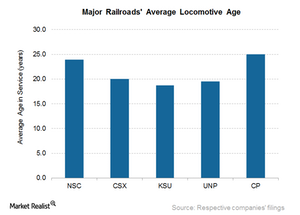
A Quick Glance at Major US Railroads’ Fleet Age
The fleet of railroads includes railcars and locomotives. In this part, we’ll compare the average locomotive fleet age of US Class I railroads.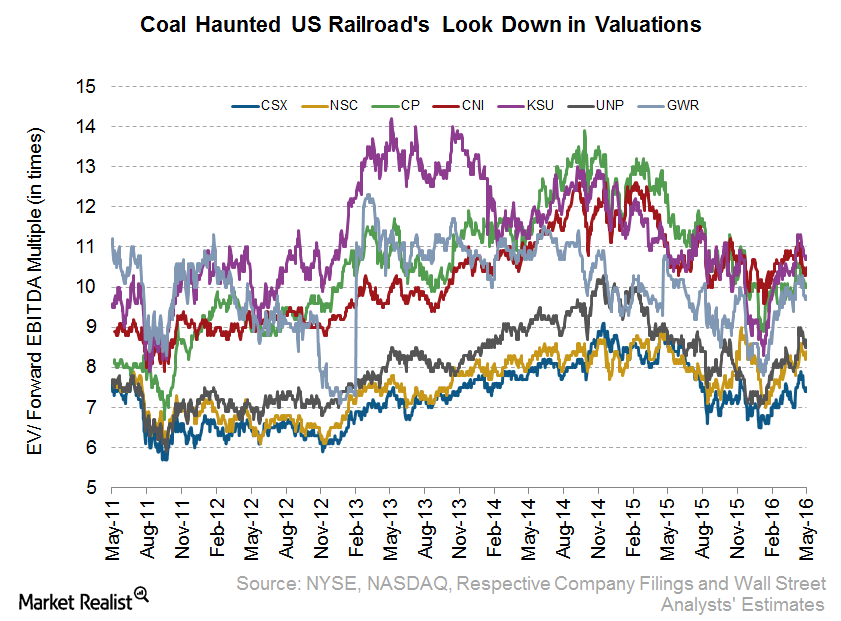
How Does the Market Value Major US Railroads?
The EV-to-forward EBITDA ratio denotes how a railroad is valued for each dollar of EBITDA that it’s anticipated to earn.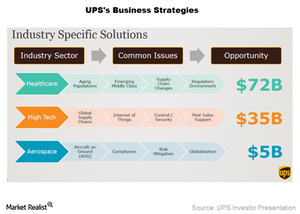
United Parcel Service: Key Growth Focus Areas
Recently, United Parcel Service has broadened the service offering of UPS My Choice to 15 more countries and territories in the Americas and Europe.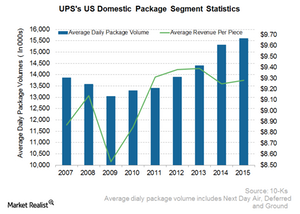
UPS Domestic Package Segment: Largest Courier Service in the US
UPS’s US Domestic Package segment consists of the time-sensitive delivery of letters, documents, and packages across the US. As the jewel in the company’s crown, this segment’s share averaged 61.1% of the total revenues in the last six years.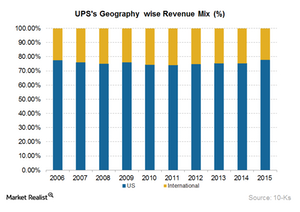
United Parcel Service: A Company Overview
In 2015, United Parcel Service reported total revenues of $58.4 billion. The company’s primary competitor in the US is the Memphis-headquartered FedEx Corporation.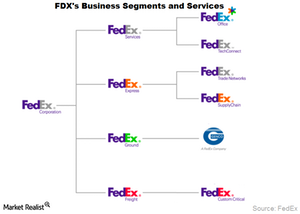
What Is FedEx’s Business Model?
FedEx provides a portfolio of transportation, e-commerce, and business services through wholly owned subsidiaries.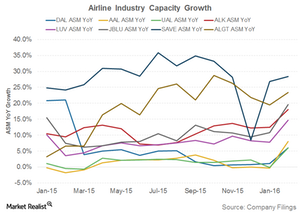
Is There Overcapacity in the Airline Industry?
In February 2016, the airline capacity of the eight major airlines exceeded their traffic growth by an average of 2%.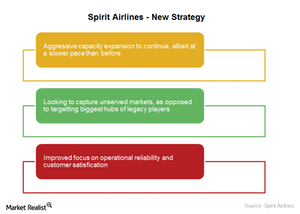
Spirit Airlines: New CEO, New Strategy
Spirit Airlines has historically followed a low-cost structure, and took numerous measures to keep its cost components the lowest in the industry.
Can Delta Air Lines Continue to Reduce Its Costs in 2016?
For 1Q16, Delta Air Lines (DAL) expects to see its operating margins improve to 18%–20%, backed by solid cost savings and lower fuel prices.Industrials Must-know: External factors that influence the airline industry
The airline industry has contributed to the globalization of the world economy. It connects buyers and sellers. It also transports goods across nations. It breaks the barrier of distance and time. The industry’s future looks bright. Travel expenditure in the U.S. is expected to grow by 4.3% in 2014 and 5.1% in 2015.
Alaska Airlines’ Keys to High Customer Satisfaction
For the seventh consecutive year, Alaska Airlines held the top spot in Customer Satisfaction among the Traditional Network Carriers survey conducted by J.D. Power.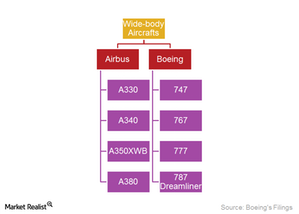
Boeing’s Fleet of Wide-Body Aircraft
Wide-body aircraft fly transoceanic routes, can accommodate 200–500 passengers, and often transport commercial cargo across the globe.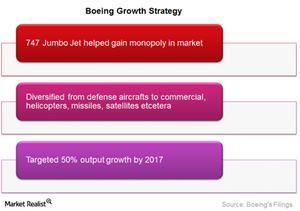
Boeing: A Wide Diversification Wingspan
When Boeing bought McDonnell Douglas in 1996, the acquisition helped Boeing overtake Lockheed Martin as the largest defense contractor.Industrials Why political and legal factors impact the airline industry
The airline industry is widely impacted by regulations and restrictions related to international trade, tax policy, and competition. It’s also impacted by issues like war, terrorism, and the outbreak of diseases—such as Ebola. These issues are political. As a result, they require government intervention.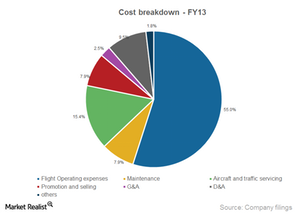
China Eastern’s operating margin declines due to rising costs
Rising costs impacted China Eastern’s (CEA) operating margins, which declined from 5% in FY09 to 1.8% in FY13.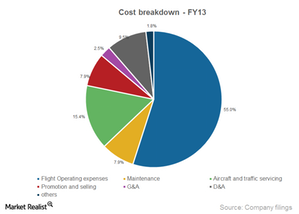
Rising operating expenses as a percentage of revenue
More than half of China Southern’s total operating expenses in FY13 were related to flight operating expenses.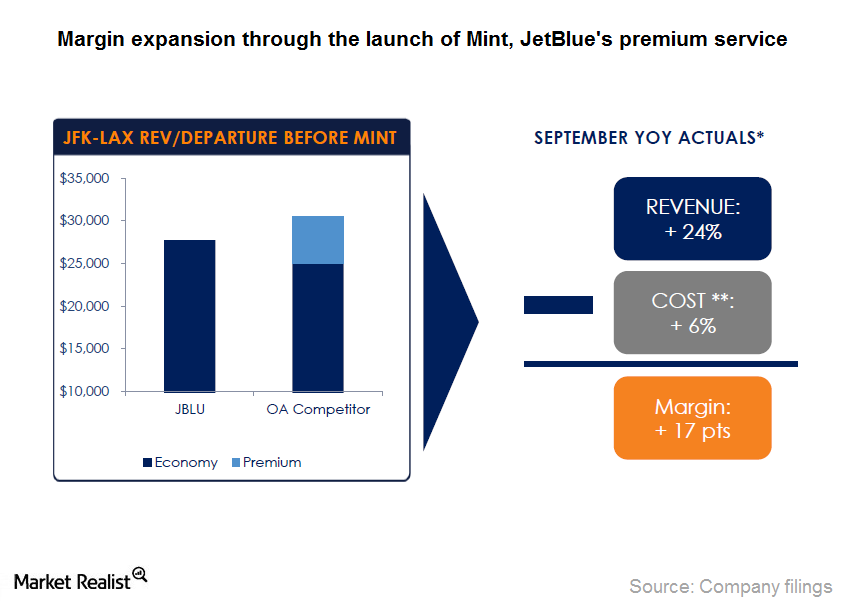
Even More drives JetBlue’s ancillary revenue
Revenue from JetBlues’ Even More Space grew at a five-year compounded annual growth rate of ~30% from $45 million in fiscal year 2008 to $170 million in fiscal year 2013.Macroeconomic Analysis Freight, passenger index values show rising transportation demand
Although trucking is the most widely used mode of transportation, the fastest growing mode of transport is by air.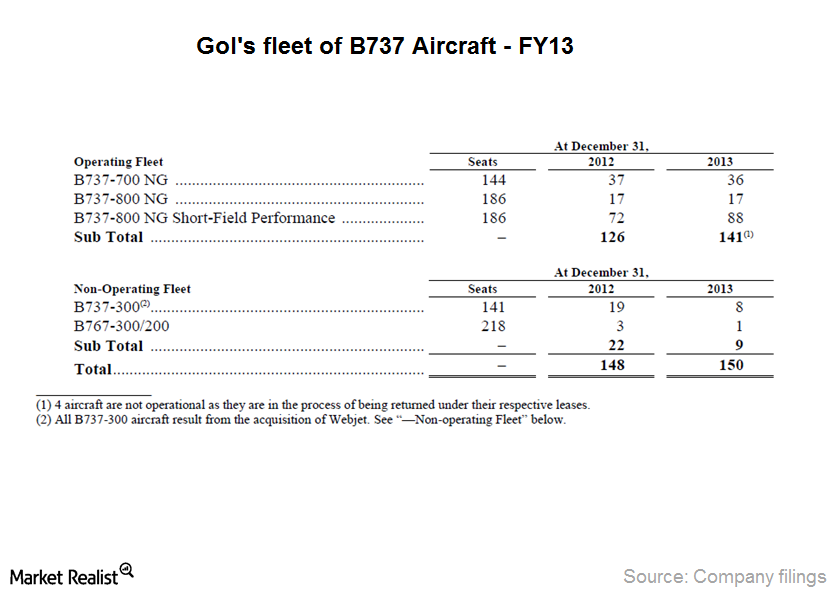
Gol maintains low-cost advantage with single fleet type
Using a single aircraft type reduces disruption of operations due to maintenance efficiencies. The airline reduces training costs with standardized pilot training and maintenance routines.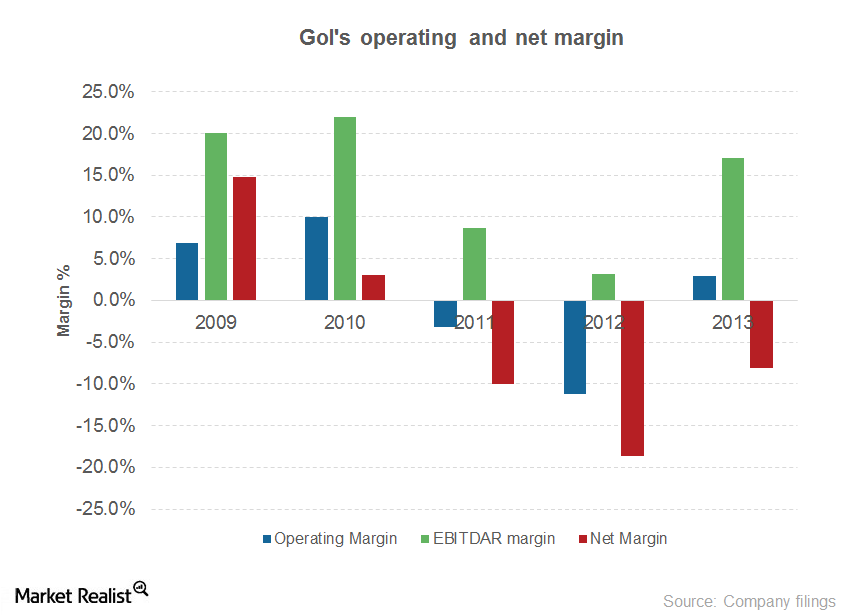
Non-operating expenses eclipse Gol’s operating profitability
Gol’s operating income turned positive in FY13 after reporting losses for two consecutive years.Industrials Must-know: SARS’ impact on the airline industry
SARS was another disease outbreak in 2003. SARS caused a panic similar to the current Ebola outbreak. SARS was a viral respiratory illness.Industrials The global airline market’s key revenue drivers and profitability
According to IATA (or the International Air Transport Association), the global airline industry passenger volume and capacity increased by 5.3% year-over-year in July 2014. Freight volume increased by 5.8%. In July load factor (or capacity utilization) for passengers was 82.3%, and for freight, it was 44.4%.Industrials Why investors should track labor costs in the airline industry
The second largest cost component for airlines is salaries, wages, and benefits. Employment in the U.S. airline industry has increased in the last couple of years when the U.S. economy recovered from the recession and demand for air travel picked up.Industrials Must-know: Why yield is another key driver for airline revenue
Yield is the average fare per passenger per mile. Passenger revenue is calculated by multiplying RPM (or revenue passenger miles) with yield. Yield varies based on demand and supply factors. Since demand for air travel is seasonal, yield is higher during peak seasons.Industrials Must-know: Why airlines should improve their load factor
Load factor is a measure of capacity utilization. It indicates the percentage of total capacity that is utilized by an airline. Since airlines are capital intensive and have high fixed costs, the efficiency with which they utilize their assets is key to generate adequate return on investment.Industrials Must-know: Why available seat miles affect airlines’ revenue
Available seat miles (or ASM) is the measure of airline capacity. It’s calculated as the total number of seats multiplied by the total distance travelled. While RPM (or revenue passenger miles) is a measure of demand, ASM is the measure of supply.Industrials Must-know: Trends in key economic indicators that impact airlines
The airline industry is an important contributor to the U.S. economy’s growth. According to Airlines for America (or A4A), the industry drives $1.5 trillion in U.S. economic activity and more than 11 million in U.S. jobs.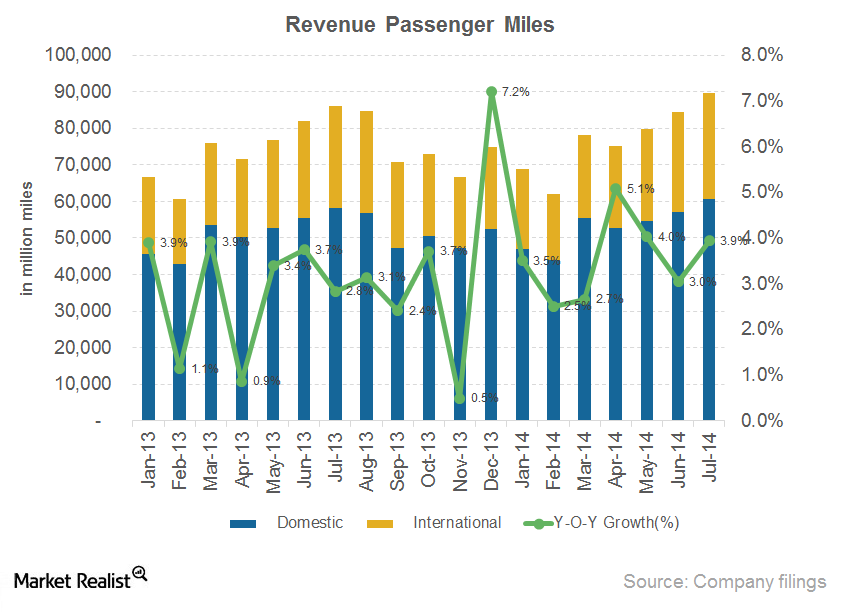
Must-know: Key indicators impacting airline industry performance
Cyclical industries follow the business cycle, so their revenues are higher during economic prosperity and lower during economic contraction. The airline industry is sensitive to changes in economic growth.Industrials Must-know: Environmental awareness in the airline industry
The global aviation industry consumes over 200 million tons of fuel per year. The rising demand for air transport and the rising crude oil prices could impact the industry’s carbon emissions. The environmental impact could also influence sustainability.Industrials Must-know: The role of technology in the airline industry
Technological advancement has been the driving factor for improving airlines’ operational efficiency. Airlines have been able to reduce costs and improve operations by using advanced aircraft engine technology, IT solutions, and mobile technology. The technology has created better connectivity and enhanced passengers’ travel experience.Industrials Travel preferences for millennials versus non-millennials
The Boston Consulting Group researched the millennial generation’s travel preferences in the business and leisure segment. This will provide a better understanding of how social and demographic factors influence air travel. It will also show how the factors influence company strategies to adopt to the changing trends.Industrials Why social and demographic factors influence air travel demand
Categorizing generations in the U.S. according to the year of birth provides insight into the changing trends in the travel and tourism industry. The demand for air travel has increased significantly over the years. Demographic factors also play an important role in forecasting demand.Industrials Why economic factors support airline industry growth
Like most industries, the airline industry is impacted by the economic cycle’s peaks and troughs. The current growth in developed economies—like U.S.—has resulted in a rise in business confidence, industrial production, and international trade.Industrials PESTEL framework analyzes the industry’s external environment
The Political, Economic, Social, Technological, Environmental, and Legal (or PESTEL) framework covers the six external factors that impact the airline industry. The framework provides a broad perspective on opportunities and threats that surround the industry. The factors can’t be controlled by the industry.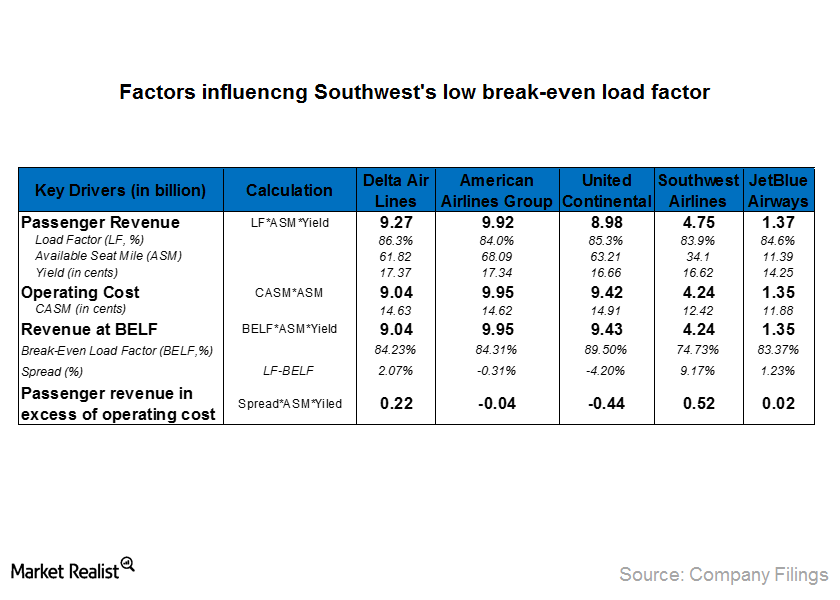
How Yield and Cost structure contribute to Southwest’s low break-even load factor?
As mentioned in the previous article, break-even load factor is calculated by dividing cost per available seat mile (or CASM) with yield per passenger mile and Southwest has the lowest break-even load factor compared to its peers. In this article we will analyze yield and cost structures of Southwest with its peers’ to determine how […]Industrials Must-know: Factors that affect aircraft utilization
Higher aircraft utilization will result in lower fixed costs per unit, as the costs spread across more air trips and passengers and results in lower cost per available seat mile.Industrials Must-know: Factors that influenced JetBlue’s top line growth
JetBlue Airways’ (JBLU) operating revenue has increased at a four-year compounded annual growth rate (or CAGR) of 13.4%, driven primarily by the growth in passenger revenue.Industrials Must-know: JetBlue’s position in key target markets
JetBlue has almost equal share in Florida, Latin America, and the transcontinental region which together accounted for about 87% of JetBlue’s total capacity.Industrials Must-know: JetBlue’s competitive airline positioning
JetBlue (JBLU) operates a hybrid business model that caters to the niche market comprising customers that it defines as “underserved customers.”Industrials An operational and financial overview of JetBlue Airways
JetBlue Airways Corporation is the fifth largest passenger carrier in the U.S. based on revenue passenger miles.Industrials Why low cost carriers influence the industry with low air fares
Over the last decade, with increasing mergers and consolidation in the U.S. airline industry and reduced competition, air fares were expected to increase dramatically.Industrials Low cost carrier strategies to maintain competitive advantage
LCCs don’t offer all services provided by a legacy carriers like free meals and drinks.Industrials Must-know: Airline business models
Southwest was instrumental in revolutionizing the industry with a differentiated business model.Industrials Overview: Southwest Airlines
As of December, 2013, the passenger segment comprised 94.5% of its revenues, cargo segment 0.9%, and ancillary revenues comprised 4.6%.Industrials Must-know: Merger synergies in the US airline industry
Network synergies accounted for almost 50%–85% of the total synergy benefits in the past airline mergers.Industrials Must-know: U.S. airline industry consolidation and restructuring
American’s number one position, in terms of revenue share as shown in the following chart, was replaced by United.Industrials Why winglets reduce aircraft drag and improve fuel efficiency
United has partnered with Aviation Partners Boeing (APB) to launch the Split Scimitar winglet. The new winglet is expected to save more than 45,000 gallons of fuel per aircraft per year.Industrials Evaluating United’s frequent-flyer program, MileagePlus
Under United’s MileagePlus program, members earn mileage credits for flights on United, United Express, airlines in Star Alliance, and other airlines that participate in the program.Industrials Why frequent-flyer programs are an effective marketing tool
Frequent-flyer programs are incentives given to customers by airlines to increase customer loyalty by awarding free miles on tickets purchased.
